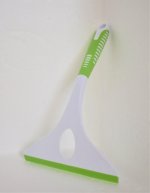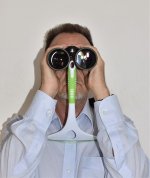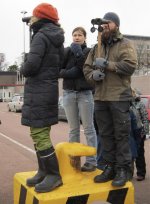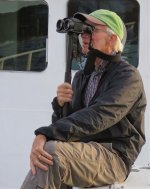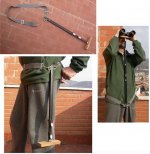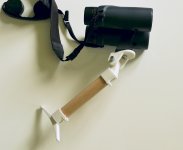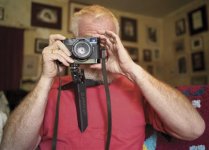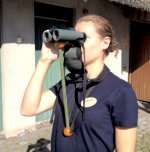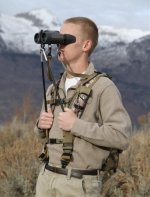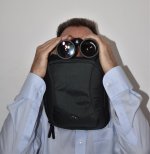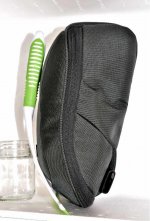Alternative Ways to Increase Stability
. . .
Braced Positions
While there are a variety of braced positions, sitting is likely to be the most stable and adaptable
Particularly useful is the open leg version, with the addition of the back against a rest (such as a tree, boulder, fence or wall),
and depending on the needed elevation, the elbows should be either in front of the knees or on the thighs (but not wobbling on top of the knees)
Rested Positions
Rested positions are likely to be superior to braced ones, since use is made of additional environmental support
And they can be broadly divided between vertical and horizontal versions
- Vertical Rests
e.g. against a tree trunk, a pole or post, an end or opening to a fence or wall
Typically both the side of the binocular and the hand holding it is placed against the support
And if possible it helps to both rest the forearm against the support, and to slouch the hip and thigh against the support
While less secure than a horizontal rest, vertical rests have the dual advantages of typically being more numerous and more accomodating in terms of useable height
- - - -
- Combinations
Using either a vertical rest, or the modified squeegee I’ve previously described (a sort on ‘Mini Finn Stick’ see:
https://www.birdforum.net/showthread.php?t=369280 ),
makes a significant difference to steadiness even with my EL SV 12x50
Used together, the degree of steadiness is combined. With moderate power binoculars around 8x, the effect approaches that of a solid horizontal rest
- - - -
- Horizontal Rests
These are likely to provide the greatest effect, since the binocular can be placed on a stable object
e.g. on a tree limb, a fence rail, the top of a fence or wall, the roof of an automobile
Some padding (such as an item of folded clothing) may be needed to ensure that the binocular is both firmly positioned and at the appropriate angle of elevation
The main problem is that for a horizontal rest to be comfortable to use, it typically needs to be within narrow limits at the standing user's eye level
Though it may also be useable if it’s an appropriate height for use while sitting
e.g. in addition to some of the possibilities mentioned above, a binocular can be rested on the top of a full size back pack
Finally, you can bring your own rest with you - a tripod and head
But that typically involves: anticipation; a suitable carrier; carrying the tripod with you; unpacking, setting up and adjusting; shifting it if needed; taking down and repacking,
and; carrying it out - along with any other gear that you have with you
And in doing so, you should also avoid inconveniencing others
(also in the usual way, when selecting both a tripod and a head, there is the inevitable triangular trade-off between expense, stability and weight)
If you only need to travel a brief distance from your transport to a viewing site, a tripod carried over a shoulder may be the way to go
However, if you’re inclined to roam more freely, or don’t wish to be encumbered with extra gear, the more creative options may appeal





